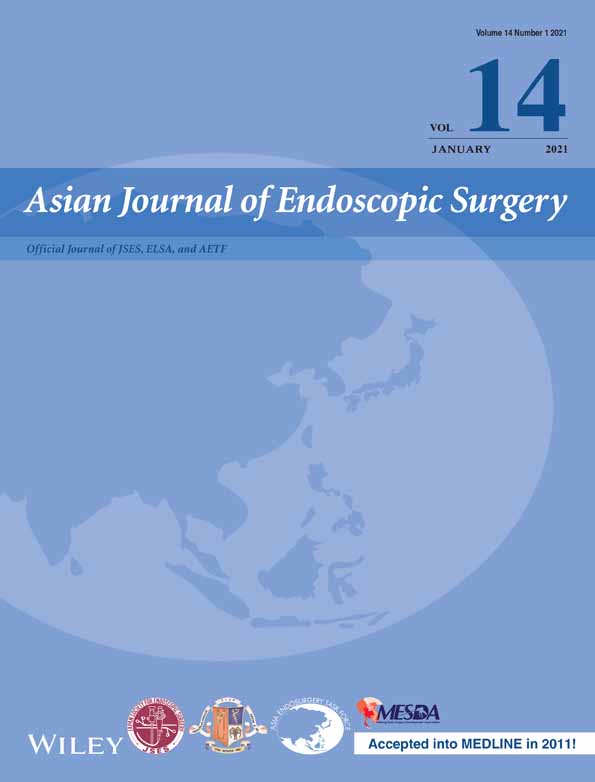Robotic diaphragmatic plication for eventration: A retrospective analysis of efficacy, safety, and feasibility
Abbreviations: FEV1, forced expiratory volume in 1 second; FVC, forced vital capacity; PFT, pulmonary function test; RALDP, robot-assisted laparoscopic diaphragmatic plication; RATDP, robot-assisted thoracoscopic diaphragmatic plication.
Abstract
Introduction
Eventration of the diaphragm results in impaired respiratory mechanics, which leads to symptoms of dyspnea. Robotic diaphragmatic plication is a recently reported technique that has had good immediate outcomes. The aim of this study was to describe our transthoracic and transabdominal plication techniques and to analyze the safety, efficacy, and feasibility of robotic diaphragmatic plication in an Indian setting.
Methods
This retrospective study was conducted at a large tertiary care center in a dedicated thoracic surgery unit. To measure the efficacy of plication, we administered a pulmonary function test to each patient at baseline and 6 months postoperatively and then compared the results.
Results
Eighteen patients underwent robotic diaphragmatic plication during the study period. Of these 18 patients, 12 underwent surgery via a transabdominal approach, and 6 underwent surgery via a transthoracic approach. Surgery was completed robotically in 17 patients. The comparison of the preoperative and postoperative pulmonary function test results showed that the mean ± SD increase in forced expiratory volume in 1 second (FEV1) was 19.9 ± 22.0% (P = .002) and the mean increase in FEV1/forced vital capacity was 5.7 ± 2.5 % (P = .225), indicating a significant improvement in FEV1 after surgery.
Conclusion
Robotic diaphragmatic plication can be performed transthoracically or transabdominally with good surgical outcomes. It is safe, effective, and feasible.




